Orange cats, often shining in pop culture, hold a special place in our hearts. These charming, ginger fur balls are indeed captivating. While the myth of orange cats’ lasagna obsession and Monday disdain remains unproven, let’s dive into fascinating facts about orange tabby cats.
1. The Gender Ratio: Why Orange Cats Are Often Male
Are orange tabby cats predominantly male? Statistically, yes. Ginger cats are something of a “genetic marvel” due to a sex-linked genetic mutation responsible for their vibrant orange coat.
For over a century, geneticists have proposed that the orange coat color in cats is determined by a gene variant on the X chromosome. Females have two X chromosomes (XX), while males have one X and one Y chromosome (XY). This means a male cat only needs to inherit the orange gene from his mother to sport a ginger coat. This genetic mechanism makes it significantly more likely for male cats to exhibit the orange trait.
Recent studies, including a 2024 American study and a 2024 Japanese study, seem to corroborate this theory. These pre-peer review studies identified ARHGAP36 as the gene responsible for the distinctive orange hue.
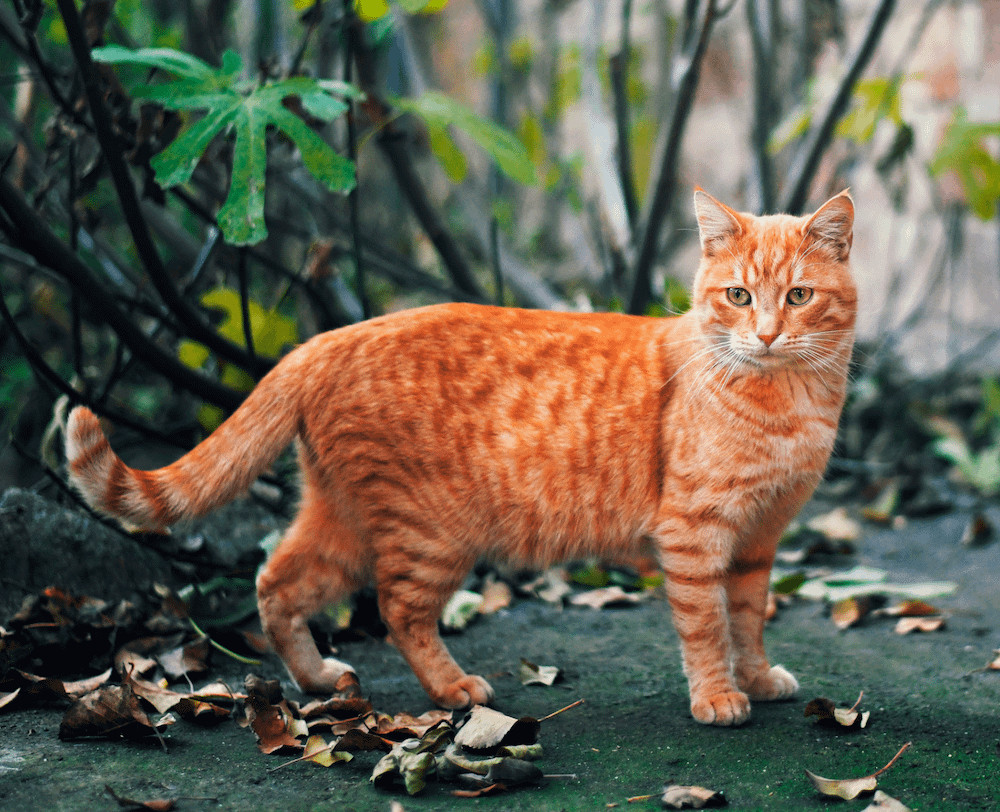 A ginger tabby cat leisurely lounging outdoors
A ginger tabby cat leisurely lounging outdoors
2. Tabby Cat Coat: More Than Just a Breed
It’s a common misconception, even among cat enthusiasts, to think “tabby” refers to a cat breed. In reality, “tabby” describes specific coat markings, irrespective of the fur color, including orange. The term “tabby” originates from “Attabiya,” a type of striped silk fabric produced near Baghdad. The characteristic stripes in tabby cats, including orange tabbies, are due to the agouti gene.
It’s important to remember: all orange cats are tabbies, but not all tabbies are orange.
3. Unpacking Tabby Patterns: No Solid Orange Cats
Here’s an intriguing fact about orange tabby cats: because of the agouti gene present in all tabby cats, a truly solid orange female cat is genetically impossible. Orange tabby cats display four distinct tabby patterns, none of which are a uniform, solid orange:
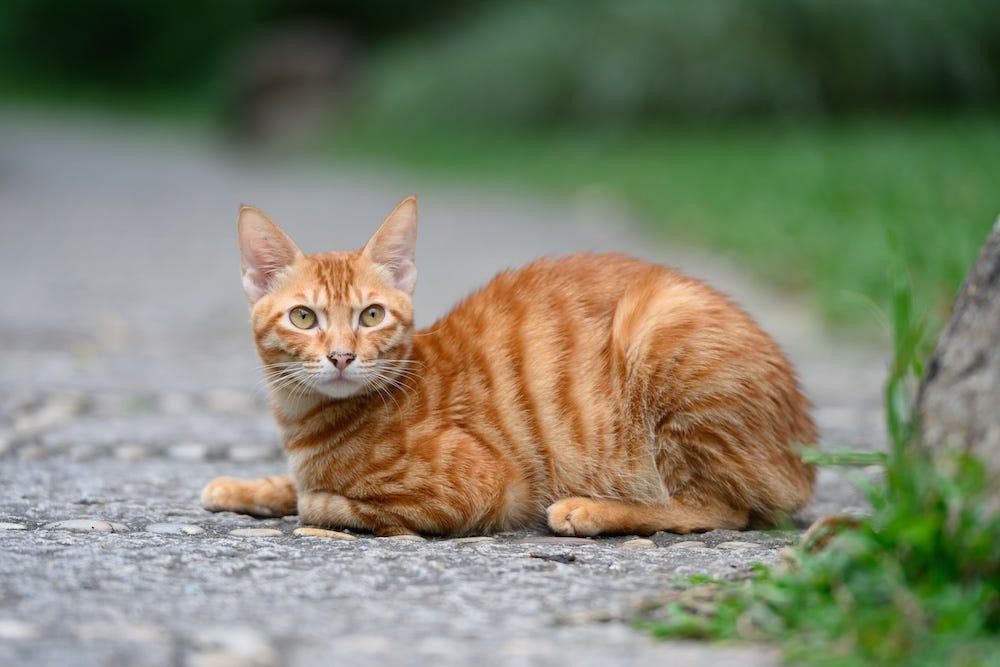 A mackerel orange tabby cat showing distinctive stripes
A mackerel orange tabby cat showing distinctive stripes
Mackerel Tabby (Striped)
This pattern, often called “tiger tabby,” features narrow, parallel stripes running down the sides of the cat, along with a distinctive “M” marking on the forehead.
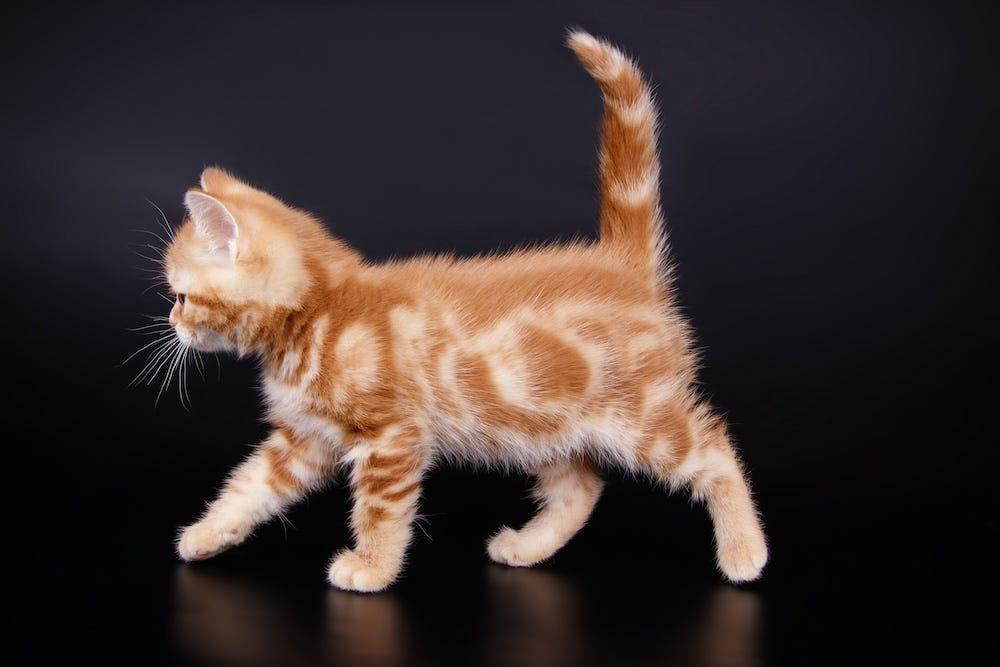 A classic orange tabby kitten with swirling patterns
A classic orange tabby kitten with swirling patterns
Classic Tabby (Swirled or Marbled)
Characterized by bold, swirling patterns on the sides of the body, this tabby pattern gives the orange cat a marbled or tie-dyed appearance.
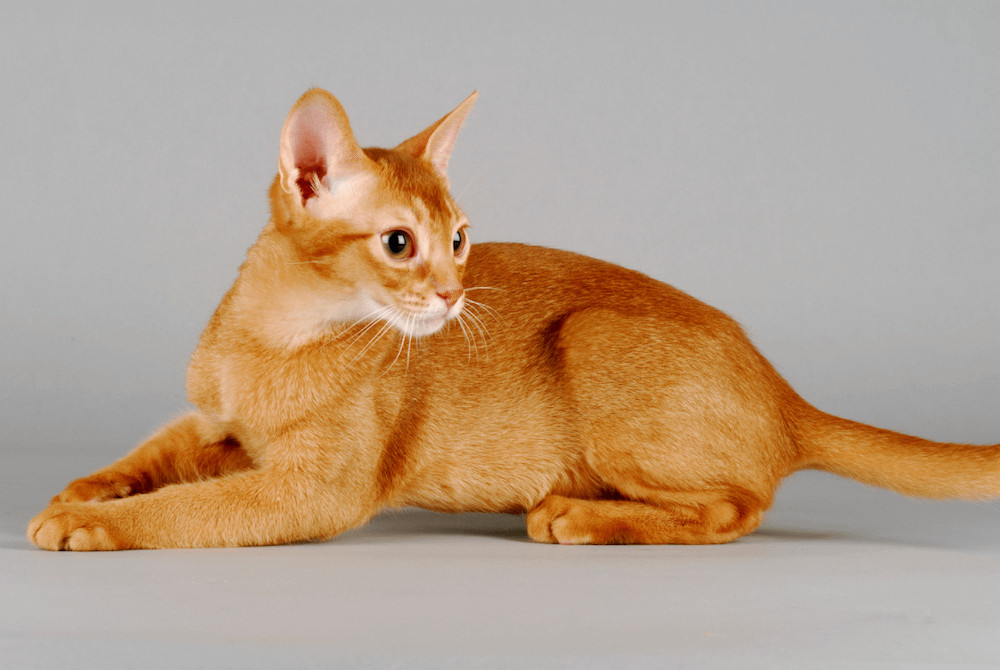 A ticked orange tabby Abyssinian cat with a salt-and-pepper coat
A ticked orange tabby Abyssinian cat with a salt-and-pepper coat
Ticked Tabby (Agouti or Stripeless)
Unlike other tabby patterns, ticked tabbies lack prominent stripes or spots. Instead, they have hairs with bands of color, creating a “salt-and-pepper” or sandy appearance. The Abyssinian breed is a prime example of a ticked tabby.
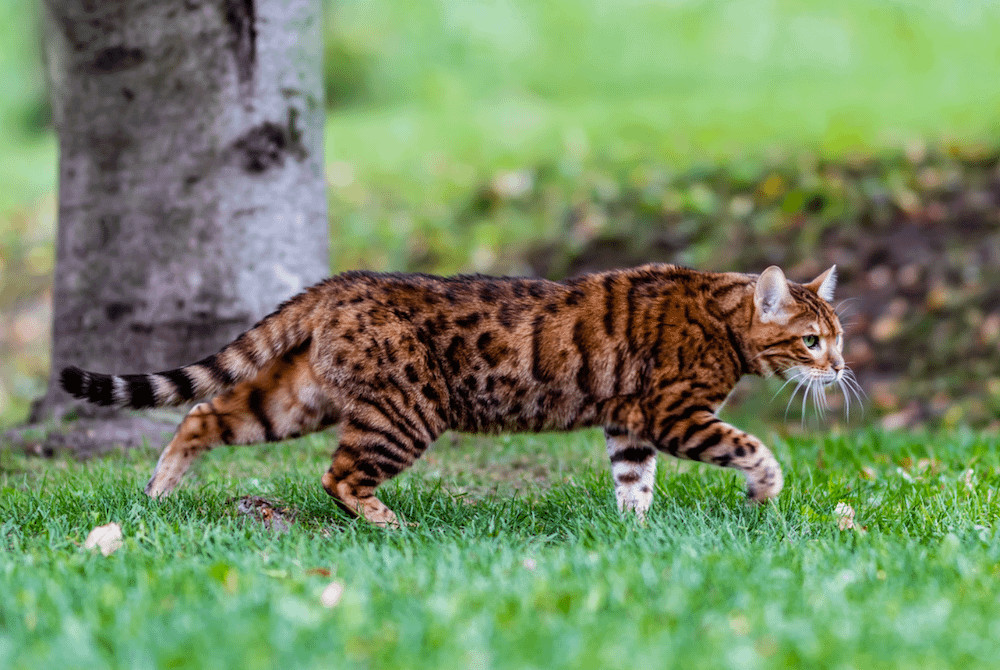 A spotted orange tabby Bengal cat with leopard-like spots
A spotted orange tabby Bengal cat with leopard-like spots
Spotted Tabby
As the name suggests, this pattern breaks up the classic stripes and swirls into distinct spots of varying sizes across the body. The Bengal cat is well-known for its spotted tabby coat.
4. Pheomelanin: The Pigment Behind the Ginger
The spectrum of ginger hues in cats, from deep reddish-orange to soft yellowish-cream, is due to pheomelanin. This pigment is the same one responsible for red hair in humans. The concentration of pheomelanin dictates the specific shade of orange, making each orange tabby cat’s coat uniquely beautiful. This pigment is fundamental to the captivating allure of orange tabbies.
5. Cat Breeds and Ginger Coats: Where Orange Hues Appear
While not a breed themselves, the orange tabby coat is frequently observed in several cat breeds. Certain breeds are genetically predisposed to displaying the orange coloration. These breeds include:
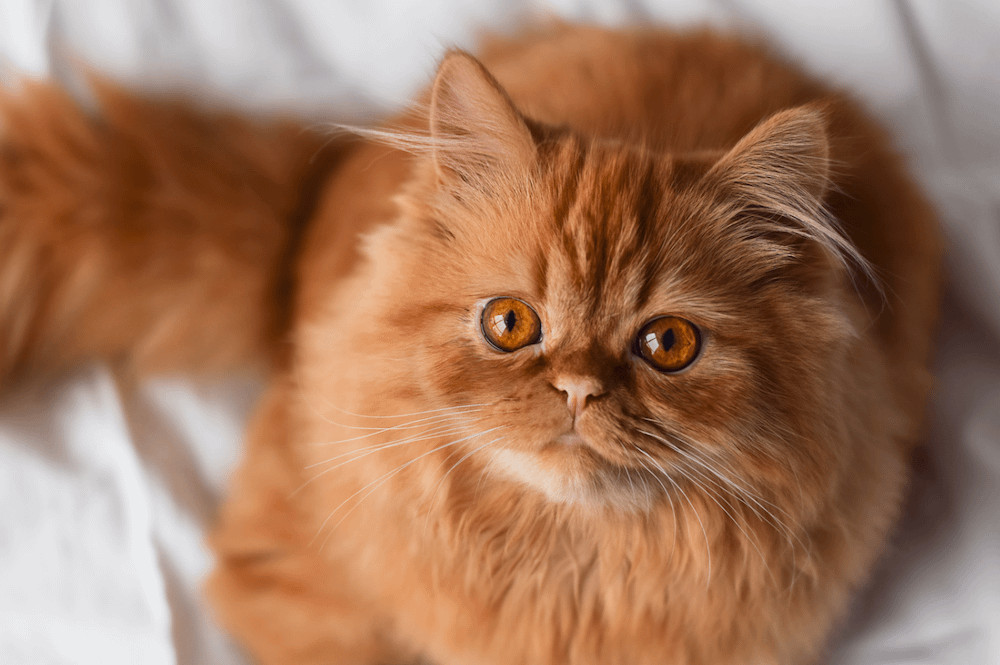 A fluffy orange tabby Persian cat with a gentle expression
A fluffy orange tabby Persian cat with a gentle expression
6. Freckles: Adorable Marks of Ginger Cats
Adding to their charm, many orange tabby cats develop black freckles as they mature. These delightful spots typically appear on their faces, especially around the gums, lips, and nose, resembling sprinkled icing. Usually harmless, any changes in pigmentation should be checked by a veterinarian to ensure your cat’s health.
7. Big Personalities: The Energetic Nature of Orange Tabbies
An orange tabby cat’s personality is influenced by breed and upbringing. While “orange tabby” isn’t a breed, anecdotal evidence from orange tabby owners suggests they often possess larger-than-life personalities.
These cats are often described as outgoing, affectionate, and exceptionally friendly. They are not just content as lap cats; they are social butterflies, eager to engage with their human families and even unfamiliar people. Orange tabbies often become the center of attention, turning ordinary moments into playful adventures.
However, remember that each cat is an individual. While these personality traits are commonly associated with orange tabbies, your ginger feline might have their own unique and wonderful quirks!
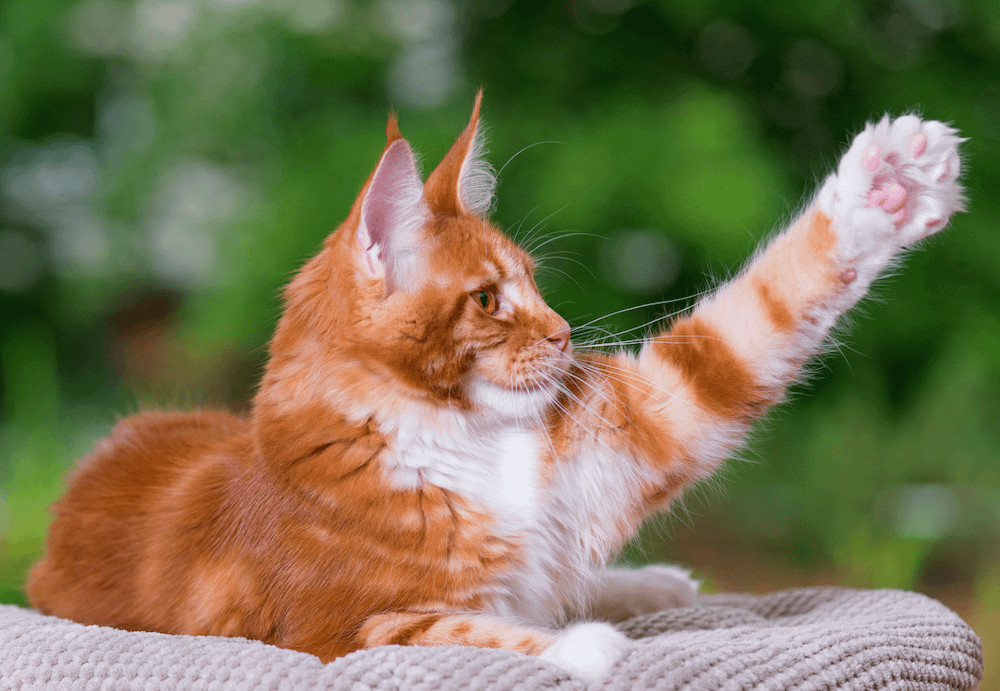 A Maine Coon orange tabby cat with a majestic and playful look
A Maine Coon orange tabby cat with a majestic and playful look
8. Eccentricity: A Trademark of Orange Cats
Ever pondered, “Why are orange cats so quirky?” It’s often simply their playful and energetic spirit shining through.
These cats exhibit an unmatched zest for life. They are naturally curious and love exploring their environment, often leading to amusing and unexpected antics. Whether it’s dashing around the house at full speed, playfully hunting imaginary prey, or creating harmless mischief, it’s all part of the endearing orange tabby appeal.
Rest assured, despite their wild side and sometimes peculiar cat behavior, they remain incredibly lovable companions. After all, what cat owner doesn’t appreciate a bit of delightful feline craziness?
9. Orange Cats in the Limelight: Screen Stars
Orange tabby cats have made significant paw prints in popular culture, far beyond just Garfield. Notable orange tabbies that have graced the screen include:
- Crookshanks (from Harry Potter series)
- Milo (from The Adventures of Milo and Otis)
- Jones (from Alien)
- Orangey (from Breakfast at Tiffany’s)
- Puss in Boots (from Shrek 2)
- Spot (from Star Trek: The Next Generation)
- Orion (from Men in Black)
Consider exploring our curated list of 15 movies to watch with your cat for a purr-fect movie night.
10. Legendary Status: The Folklore of Orange Cats
Orange cat enthusiasts know their legendary nature intrinsically. Here are a few instances that highlight their esteemed status:
Winston Churchill, the iconic leader, was known for his fondness for orange cats. He had an orange cat named Tango in his earlier years and later another named Jock. Furthermore, a charming legend explains the “M” marking on orange tabby foreheads: it’s said that an orange tabby cat cuddled with baby Jesus, helping him sleep, and was blessed with Mother Mary’s touch, leaving the “M” as a mark of honor.
Orange Tabby Lifespan and Health Considerations
The lifespan of an orange tabby cat is largely determined by whether they are primarily indoor or outdoor cats, as well as their breed lineage. A mixed-breed orange tabby, often referred to as a Domestic Shorthair or Domestic Longhair, can live for 12-18 years when kept indoors. Sadly, the average lifespan for outdoor cats is considerably shorter due to environmental hazards.
The higher prevalence of males among orange tabbies also brings certain health predispositions. Male cats are more prone to specific health issues. For example, their narrower urethras make them more susceptible to feline urethral obstruction, a serious urinary blockage. This condition is incredibly painful and can become a life-threatening emergency if not promptly treated.
For orange tabby parents, simplifying cat care is possible with innovations like the Litter-Robot 4 self-cleaning litter box. This automated litter box eliminates manual scooping. Furthermore, integrating the Whisker app can aid in monitoring your cat’s health, alerting you to early indicators of potential issues like weight changes or altered bathroom habits that could signal urinary problems.
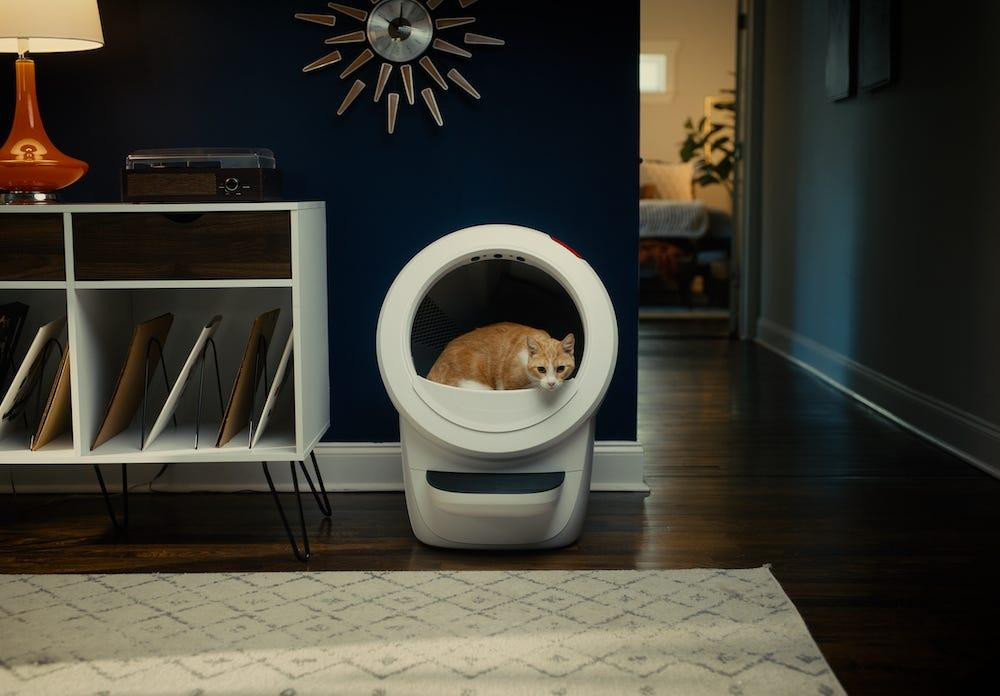 An orange tabby cat comfortably using the Litter-Robot 4
An orange tabby cat comfortably using the Litter-Robot 4
Obesity is another health concern, particularly in male orange tabbies. Known for enjoying both cat and human food, they can easily become overweight if their diet isn’t carefully managed. Excess weight can lead to various health complications, including diabetes and joint problems. An automatic cat feeder can be instrumental in preventing overeating.
However, these potential health concerns shouldn’t deter you. With regular veterinary check-ups and a healthy lifestyle, your orange tabby companions can enjoy long, joyful, and healthy lives filled with lounging, playing, purring, cuddling, and, of course, eating!
[

